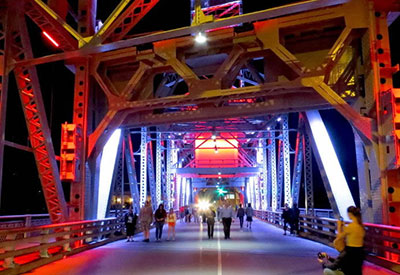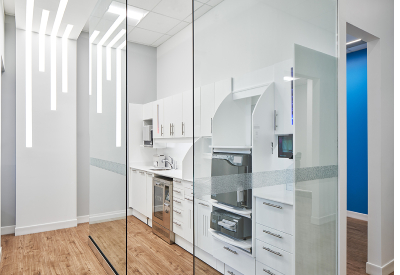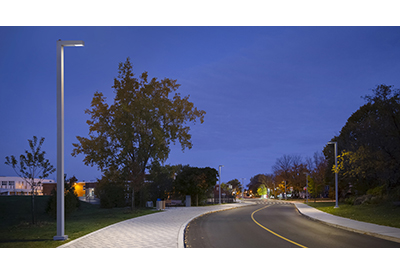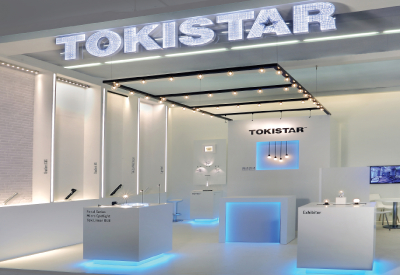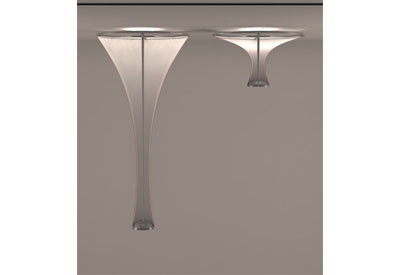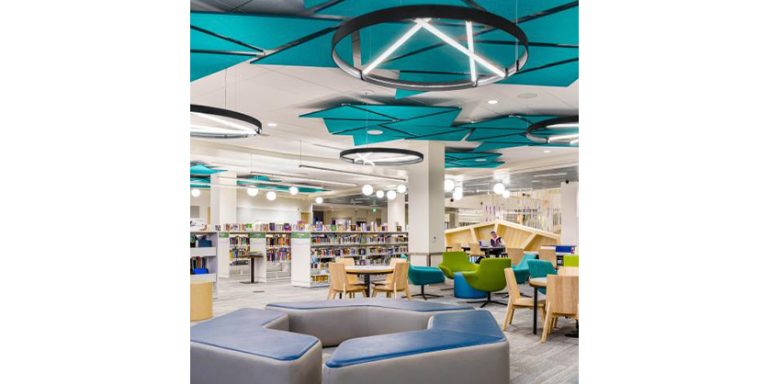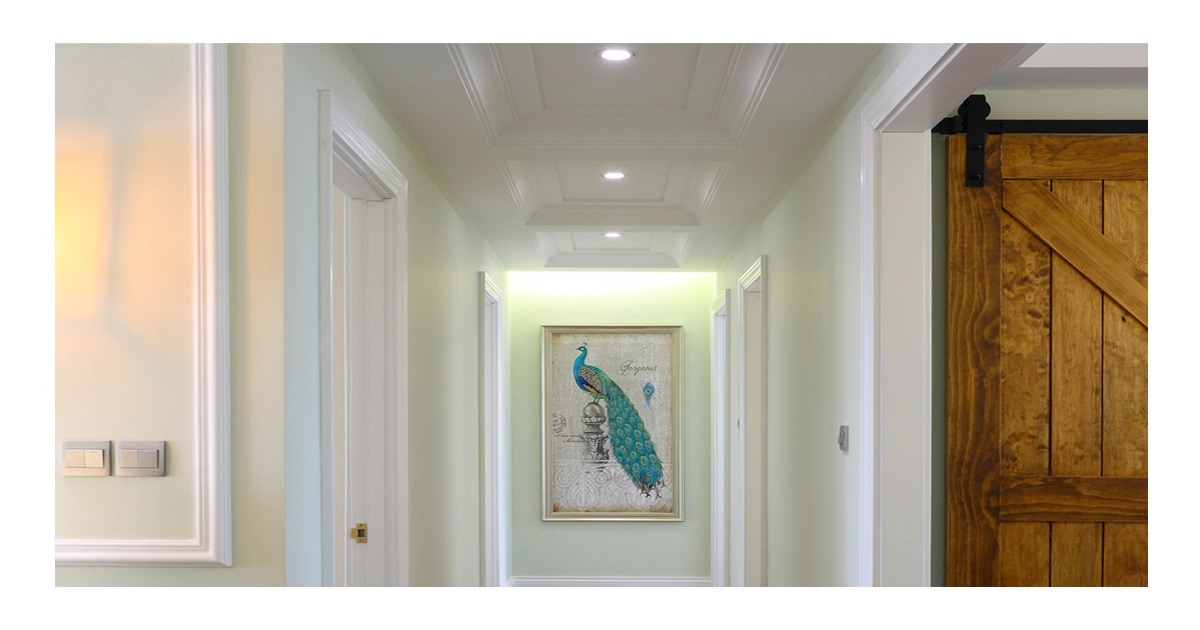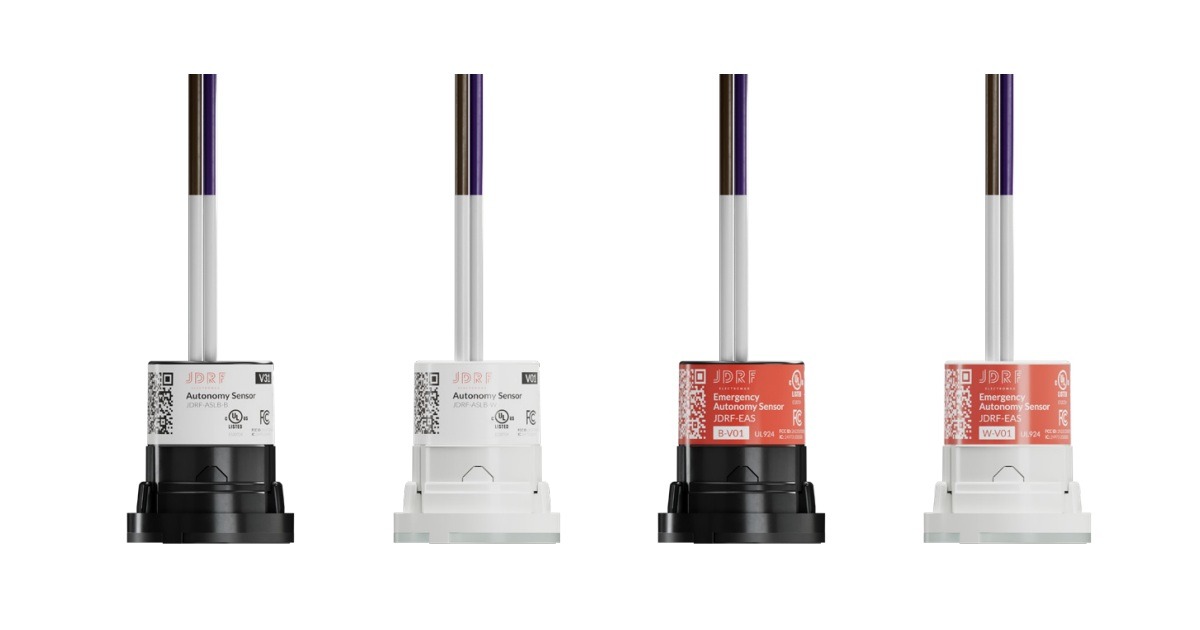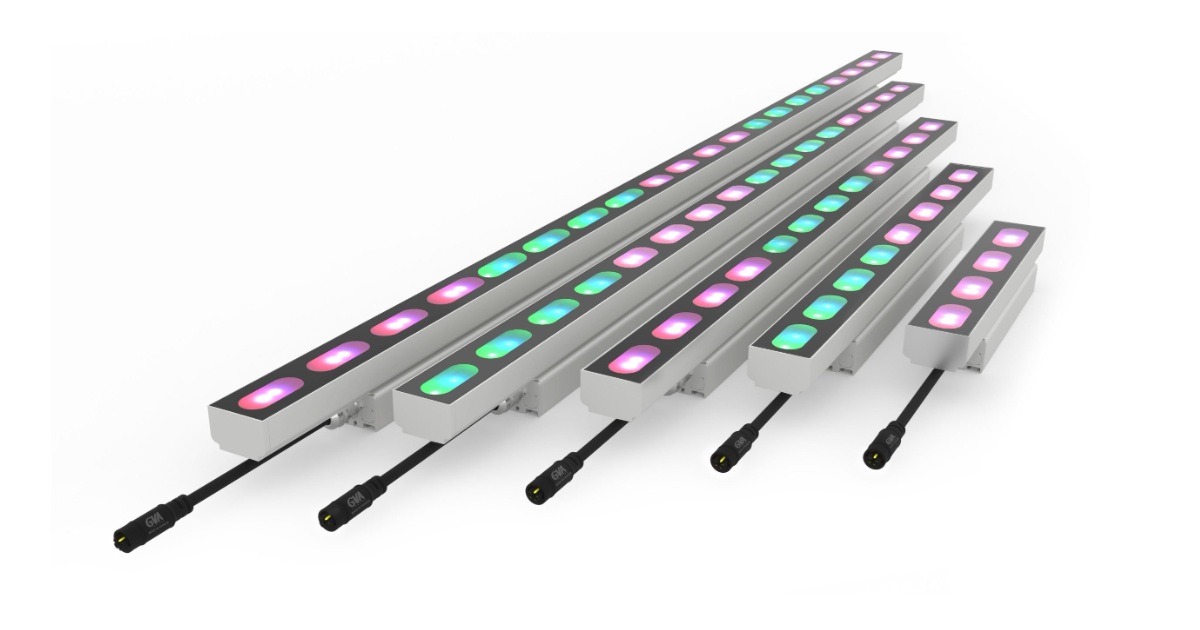SeaChange Receives 2021 Lighting Control Innovation Award of Merit
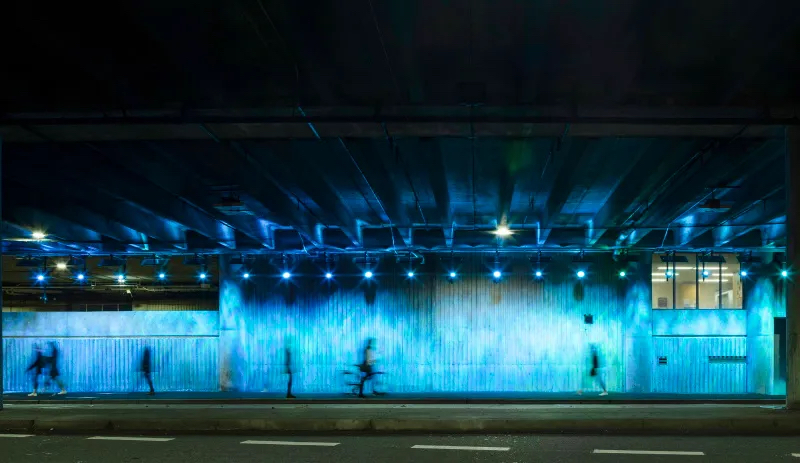
October 26, 2022
By Lighting Controls Association
The Lighting Control Innovation Award was created in 2011 as part of the Illuminating Engineering Society’s Illumination Awards program, which recognizes professionalism, ingenuity and originality in lighting design. LCA is proud to sponsor the Lighting Control Innovation Award, which recognizes projects that exemplify the effective use of lighting controls in nonresidential applications.
This month, LCA explores a lighting control solution installed at SeaChange, a light art installation in a vehicular underpass in Lonsdale Quay, North Vancouver, BC. Lighting control design by Janelle Drouet. Photography by Nic Lehoux. Lighting controls by ETC and Eaton.
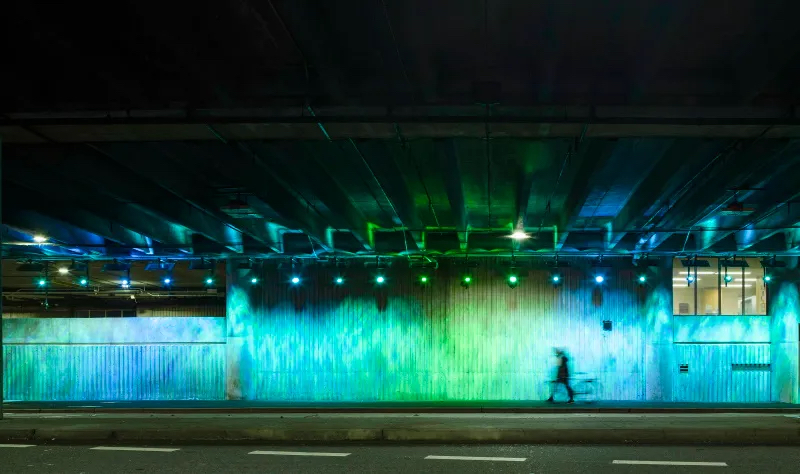
Overlaying colors of light create varied colors, hues and patterns of ‘brush strokes’ that create a canvas feel softening the Brutalist concrete wall.
SeaChange celebrates North Vancouver’s connection to the waterfront by marking the location of the historic tide line and by serving a symbolical reminder of the importance of water to humanity. The artwork mimics the ephemeral and magical feeling of being immersed within a body of water, as if light was penetrating an undersea world through water ripples above the tunnel. This watery effect is created using a series of LED lights mounted near the wall to aim at textured mirrored panels that reflect light patterns back onto the surfaces and walkway of the tunnel. When the tunnel is unoccupied the artwork creates a gentle shifting light effect, however when a pedestrian or cyclist enters the underpass, a dynamic ripple is triggered across the wall in front of them.
The challenge began with finding solutions for the dark and menacing underpass, with challenges of a harsh exterior environment with adjacency to well-traveled roadways, small public budget, and need for durable solutions. In addition, there were limitations to the available mounting positions and solutions needed to address the limited maintenance plan available, durability to failures, vibration or small roadway debris. The innovative solution was to find standard equipment and materials and utilize them in a unique way while activating the space.
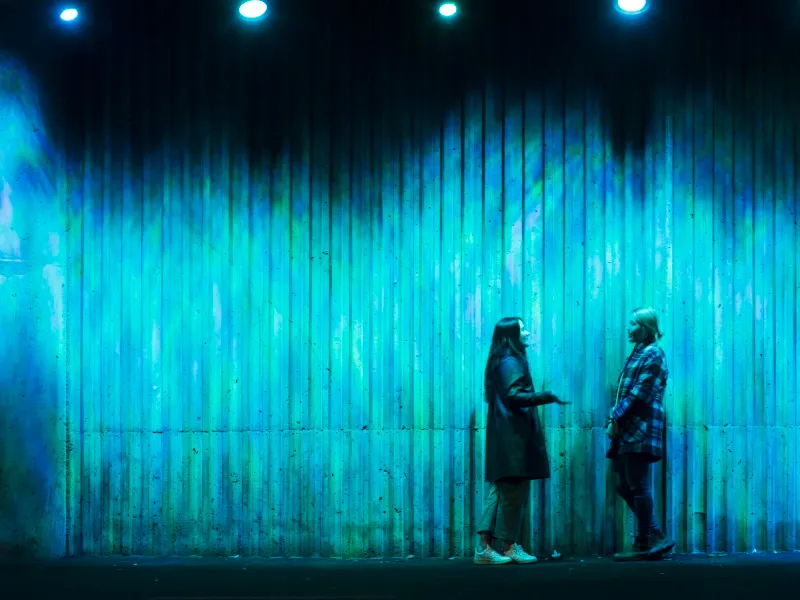
Consideration of visual comfort, minimizing direct view to sources, was achieved by reflecting light to create comfortable pools of illumination to wash the walls.
The team explored reflecting light on of various materials as a gentle reference to the organic refraction of light through water. This was achieved by light reflecting off of bumpy and textured stainless steel mirror, illuminating the adjacent wall and spilling into the ceiling above in curved wave-like patterns. Exterior color changing luminaires were selected, with a multi-diode array, to allow for additional texture in the effects. Occupancy sensors trigger individual ripples of colors for pedestrians and cyclists, while scenes sit in a lower energy use “resting state” during less active times.
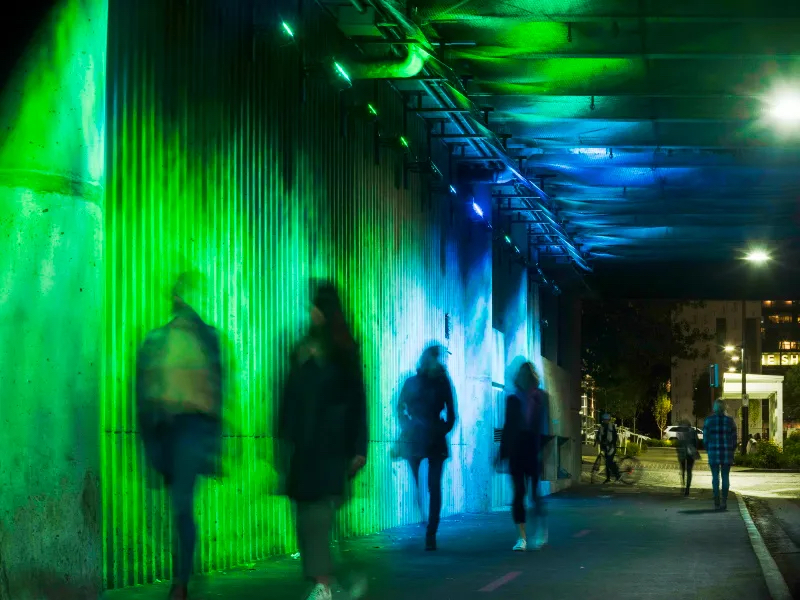
Luminaires were modified to eliminate the red diodes to enhance the green, blue and white effects in the water-esque palette.
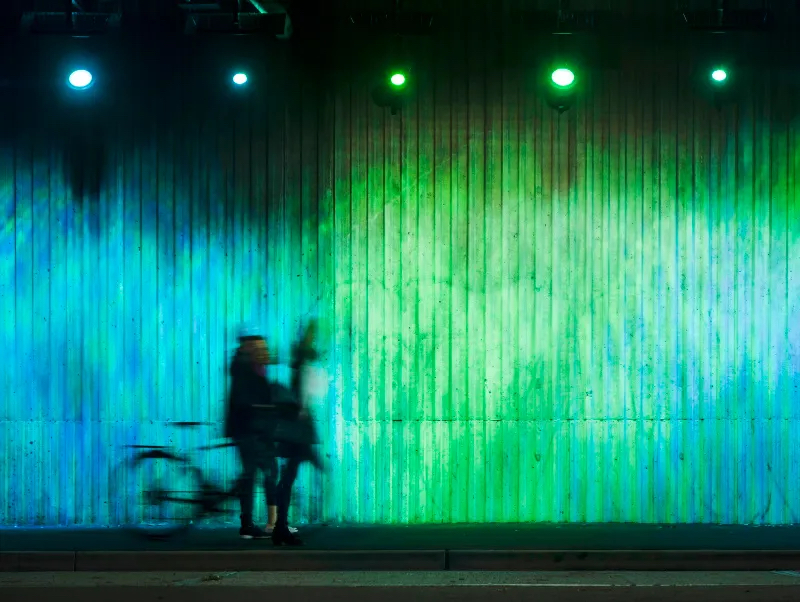
Short throw proximity sensors purposefully activate the scene, to free the light to ripple and move with the pedestrians and cyclists.
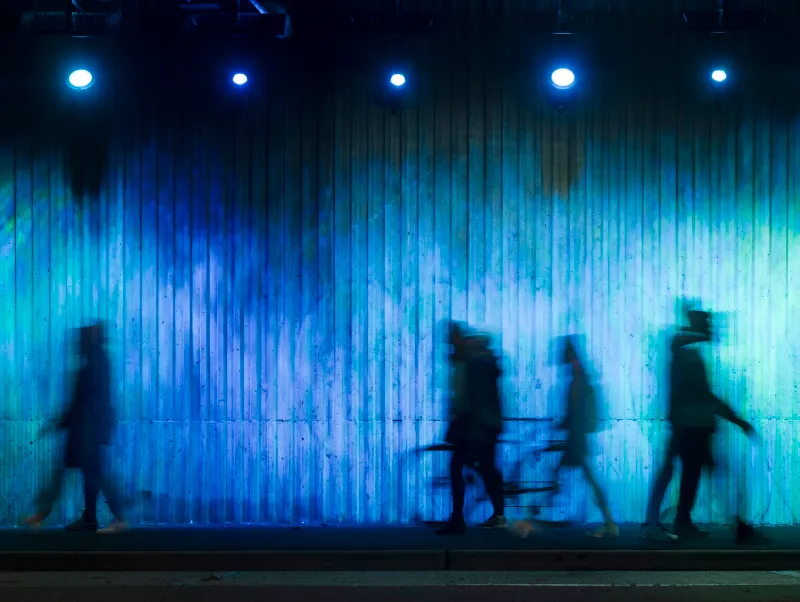
Careful modelling, analysis, mock-ups and testing informed the spacing and optic distribution and beam sharpening accessory selection to create soft overlapping layers.
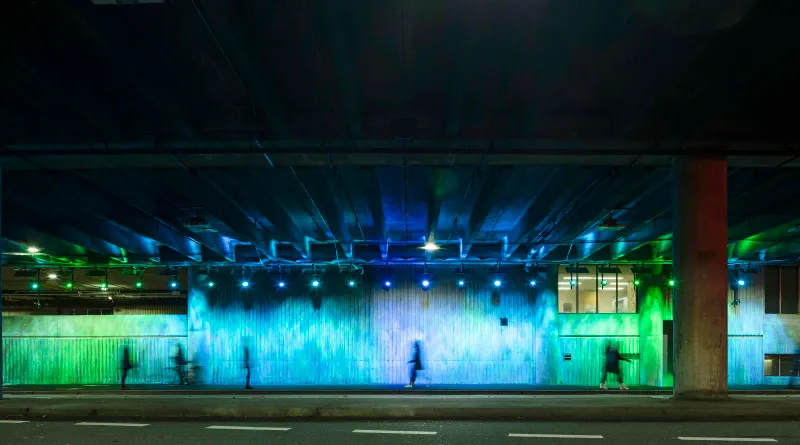
Responsive to human movement, various specialty short throw exterior occupancy sensors generate different looks highlighting path of travel via a simple DMX show controller.
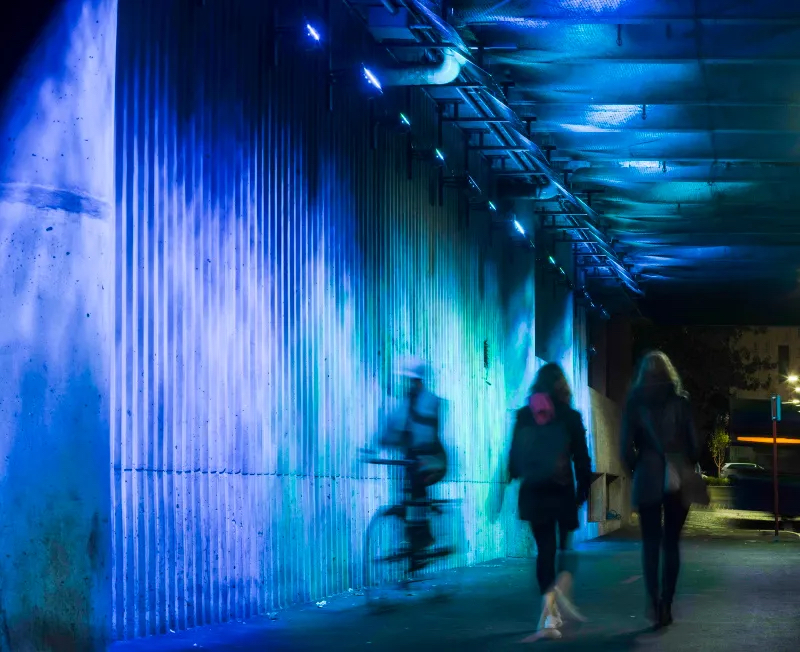
Various lighting experiments. carried out by all members of the team, determined the material to reflect the light achieving the broadest organic patterns and textures.

